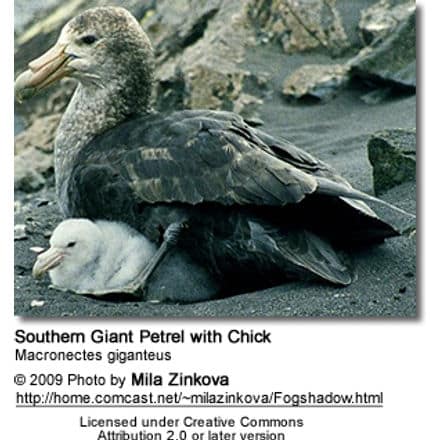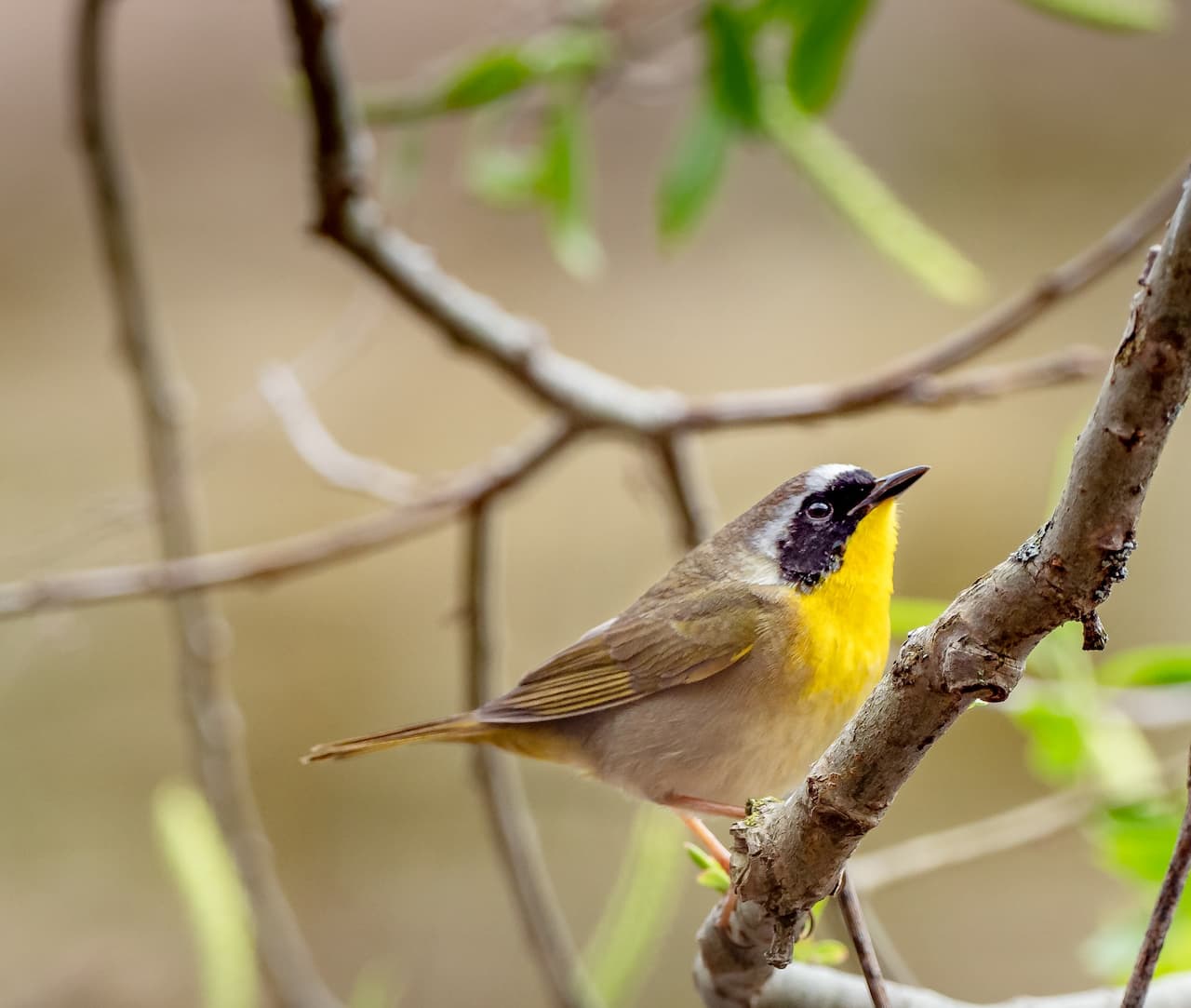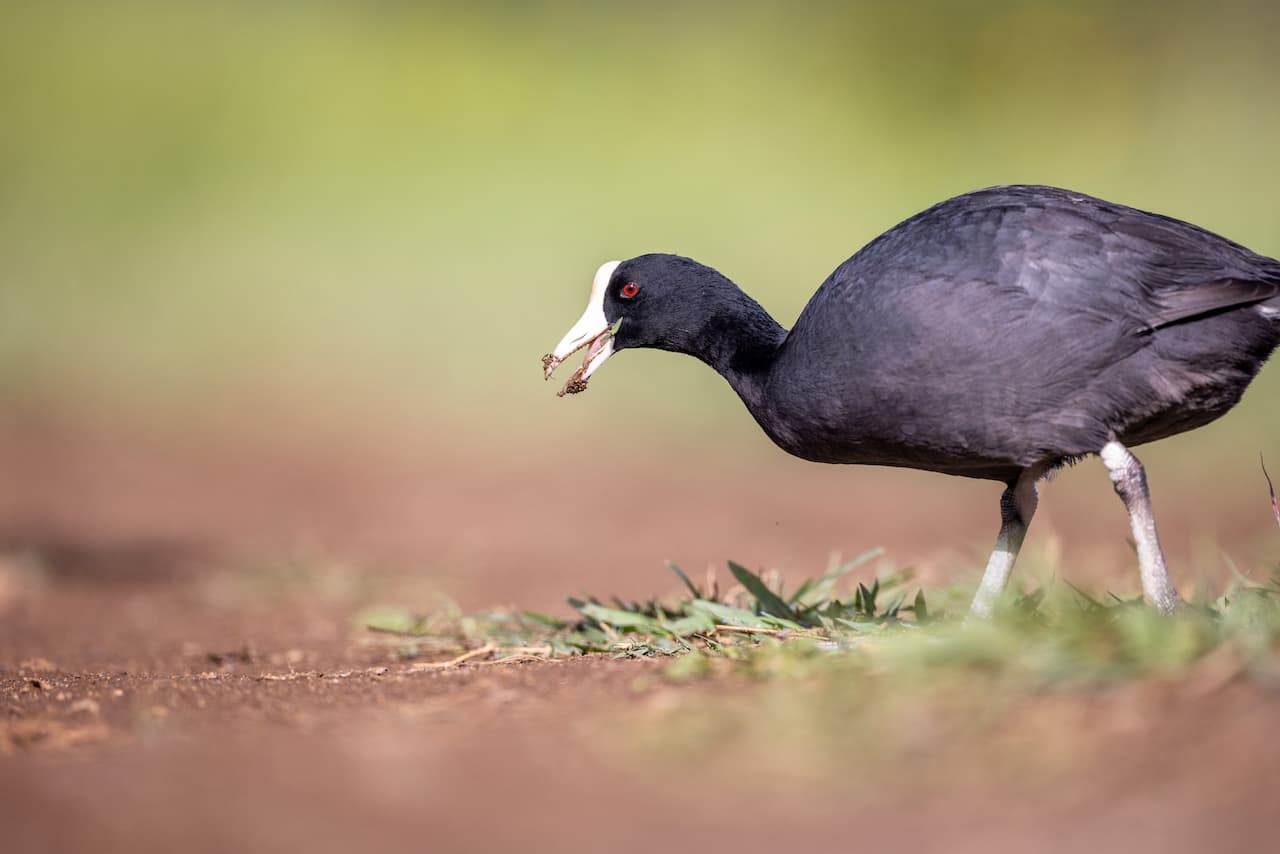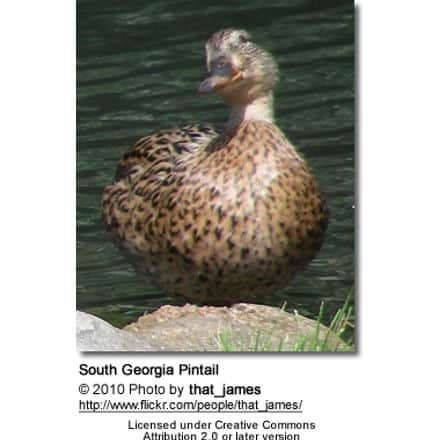Giant Petrels
Giant petrels is a genus from the family Procellariidae and consist of two species. They are the largest birds in this family.
Both species are restricted to the Southern Hemisphere, and though their distributions overlap greatly with both species breeding on the Prince Edward Islands, Crozet Islands, Kerguelen Islands, Macquarie Island and South Georgia, many Southern Giant Petrel nest further south, with colonies as far south as Antarctica.
Giant petrels are aggressive predators and scavengers, which has led to the other common name they were known as, the Stinker, and the whalers used to call them gluttons.
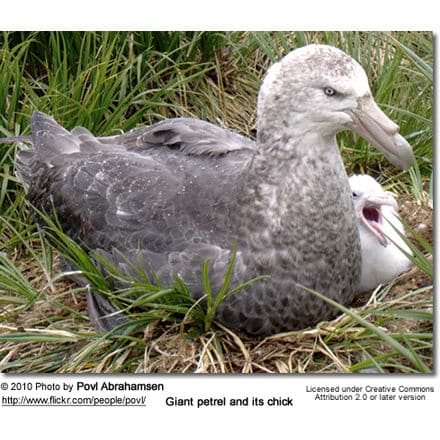
Taxonomy
The giant petrels are two large seabirds from the genus Macronectes. Long considered to be conspecific (of, or belonging to, the same species) (they were not established as separate species until 1966), the two species, the Southern Giant Petrel, Macronectes giganteus, and Northern Giant Petrel, Macronectes halli, are considered with the two fulmars,
Fulmarus, to form a distinct sub-group within Procellariidae, and if you add in the Antarctic Petrel, Cape Petrel, and the Snow Petrel, they form a separate group from the rest of the family.
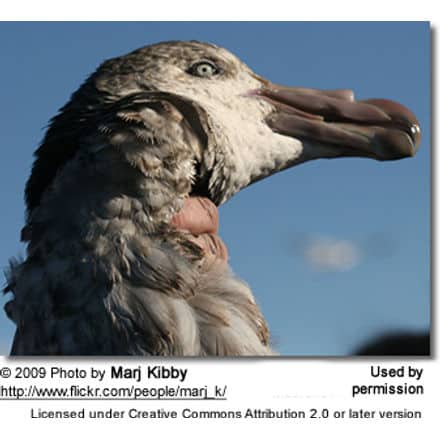
Description
Giant petrels earn their name.
The Southern Giant Petrel is slightly larger at 3–8 kg (6.6–17.6 lb), 180–210 cm (71–83 in) across the wings and 86–100 cm (34–39 in).
The Northern Giant Petrel is 3–5 kg (6.6–11.0 lb), 150–210 cm (59–83 in) across the wings and 80–95 cm (31–37 in).
They superficially resemble the albatross, and are the only procellarids who can equal them in size. They can be separated from the albatrosses by their bill; the two tube nostrils are joined together on the top of the bill, unlike on the albatross where they are separated and on the side of the bill.
They are also the only members of the Procellariidae family to have strong enough legs to walk effectively on land. They are also much darker and more mottled brown (except for the white morph Southern, which is whiter than any albatross) and have a more hunch-backed look.
The bills of Procellariiformes are also unique in that they are split into between 7 and 9 horny plates. The Petrels have a hooked bill called the maxillary unguis which can hold slippery food.
They produce stomach oil made up of wax esters and triglycerides that are stored in the proventriculus (stomach). This is used against predators as well as an energy-rich food source for chicks and for adults during their long flights.
Finally, they have a salt gland that is situated above the nasal passage and helps desalinate their bodies, due to the high amount of ocean water that they imbibe. It excretes a high saline solution from their nose.
They are harder to tell from each other, possessing similar long pale orange bills and uniform mottled grey plumage (except for 15% of Southern Petrels, which are almost completely white). The billtip of halli is reddish-pink and that of giganteus is pale green, appearing slightly darker and lighter than the rest of the bill, respectively. The underside of the older halli is paler and more uniform than giganteus, the latter showing a contrast between the paler head and neck and a darker belly.
Additionally, adult halli typically appear pale-eyed, while adult giganteus of the normal morph typically appear dark-eyed (occasionally flecked paler). Classic examples of Northern Giant are identifiable at some range.
Unfortunately, young birds of both species are all dark and very hard to distinguish unless bill tip colour can be seen. Some relatively young Northern Giant Petrels can appear to be paler on the head suggesting Southern Giant and thus this species is harder to confirm.

Etymology
Macronectes comes from the Greek words makros meaning long and nēktēs meaning swimmer. Also, Petrel is derived from St. Peter and the story of his walking on water as they appear to run on the water when they take off.
Feeding
Giant petrels are highly opportunistic feeders, uniquely for procellarids they will feed on land as well as at sea, in fact, they find most of their food near the coast. On land, they feed on carrion (the carcass of a dead animal), particularly that of seals and penguins.
They also display their dominance over carcasses with a “sealmaster posture”: the head and the wings are held outstretched, the head pointing at the opponent, and the wingtips pointing slightly back; the tail is raised to a vertical position.
They are also capable of killing other seabirds, even those as large as an albatross, which they kill either by battering them to death (most commonly chicks of other species during the breeding season) or drowning. At sea they feed on krill, squid, and fish, often attending fishing fleets in the hope of picking up offal (= entrails and internal organs of butchered animals).

Reproduction
The Southern Giant Petrel is more likely to form loose colonies than the Northern, both species laying a single egg in a rough nest built about 50 cm (20 in) off the ground. The egg is incubated for about 60 days, once hatched the chick is brooded for 3 weeks. Chicks fledge after about 4 months but do not achieve sexual maturity for another 6–7 years after fledging.
Conservation
While both species are listed as Near Threatened in the 2008 Red List by the IUCN, recent evidence suggests they are less threatened than previously believed, and the populations of both actually appear to have increased, at least locally. Consequently, they will be listed as Least Concern on the 2009 Red List.
The Southern Giant Petrel is listed as endangered on the Australian Environment Protection and Biodiversity Conservation Act 1999, while the Northern Giant Petrel is listed on the same Act as vulnerable. Their conservation status also varies from state to state within Australia. For example:
- Both the Southern and Northern Giant Petrels are listed as threatened on the Victorian Flora and Fauna Guarantee Act (1988). Under this Act, Action Statements for the recovery and future management of these species have been prepared.
- On the 2007 advisory list of threatened vertebrate fauna in Victoria, the Southern Giant Petrel is listed as vulnerable, while the Northern Giant Petrel is listed as near threatened.

